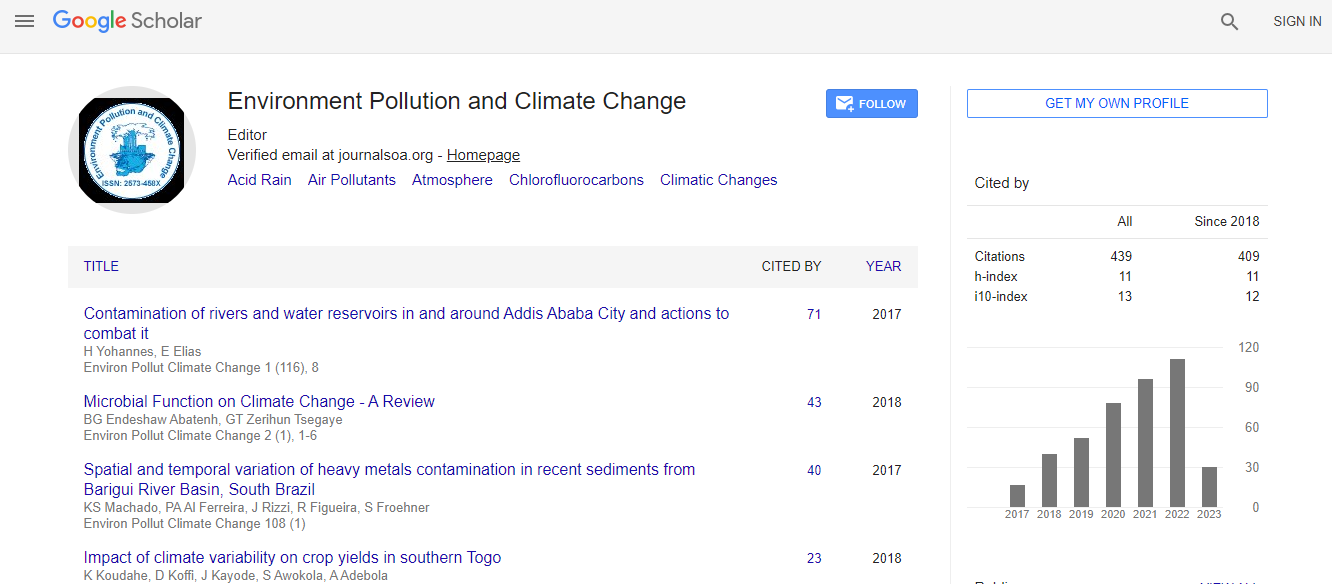Research Article
Characterizing the Relationship between Carbon Dioxide Emissions and Vehicle Operating Modes on Roundabouts -A Pilot Test in a Single Lane Entry Roundabout
Shaojie Liu, Qing Li*, Fengxiang Qiao, Jianbang Du and Lei YuInnovative Transportation Research Institute, Texas Southern University, Houston, Texas, USA
- *Corresponding Author:
- Qing Li
Post-doctoral Fellow, Innovative Transportation Research Institute
Texas Southern University, 3100 Cleburne Street
Houston, Texas, 77004, USA
Tel: 713-313-7532
E-mail: liq@tsu.edu
Received date: March 28, 2017; Accepted date: April 03, 2017; Published date: April 09, 2017
Citation: Liu S, Li Q, Qiao F, Du J, Yu L (2017) Characterizing the Relationship between Carbon Dioxide Emissions and Vehicle Operating Modes on Roundabouts -A Pilot Test in a Single Lane Entry Roundabout. Environ Pollut Climate Change 1:120.
Copyright: © 2017 Liu S, et al. This is an open-access article distributed under the terms of the Creative Commons Attribution License, which permits unrestricted use, distribution, and reproduction in any medium, provided the original author and source are credited.
Abstract
Roundabouts were initially installed to improve traffic flow and safety. However, the reduction may be not only limited to the idling duration. This research attempts to characterize the relationship between CO2 emissions and vehicle’s operating modes on a roundabout. An on-board emission pilot test was conducted on a one-lane-entry roundabout with four legs between Westcott Street and Washington Avenue in Houston, Texas, during peak and nonpeak hours of two consecutive weekdays. The test vehicle was a two-year old gasoline vehicle, which was equipped with a Portable Emission Measurements System (PEMS) to detect real-time exhaust emission rates from the tailpipe and estimate fuel consumption rates. A Global Positioning System (GPS) with magnetic force was placed on the roof of the vehicle to record vehicle’s dynamic geolocation, while an On-board diagnostic (OBD) II port was connected to the test vehicle collected real-time vehicle operation information, such as speeds. Results showed that 35 km/h approaching speed could minimize the CO2 emissions. Hard acceleration can lead to a spike in the CO2 emissions, while speeding by frequent small acceleration is beneficial to control the emissions. The longer route within the roundabout is in favor of fewer CO2 emissions. The vsp between 0 and 9 kw/ton and speed between 1.6 km/h and 40.2 km/h (1-25 mph) are identified as the typical feature of the vehicle operations on the roundabout.

 Spanish
Spanish  Chinese
Chinese  Russian
Russian  German
German  French
French  Japanese
Japanese  Portuguese
Portuguese  Hindi
Hindi 
